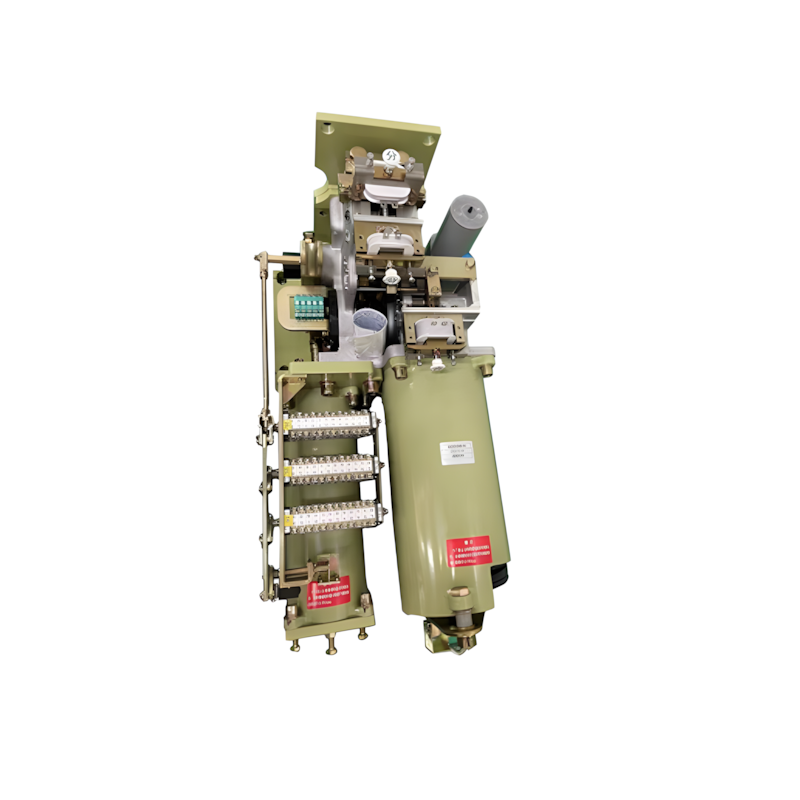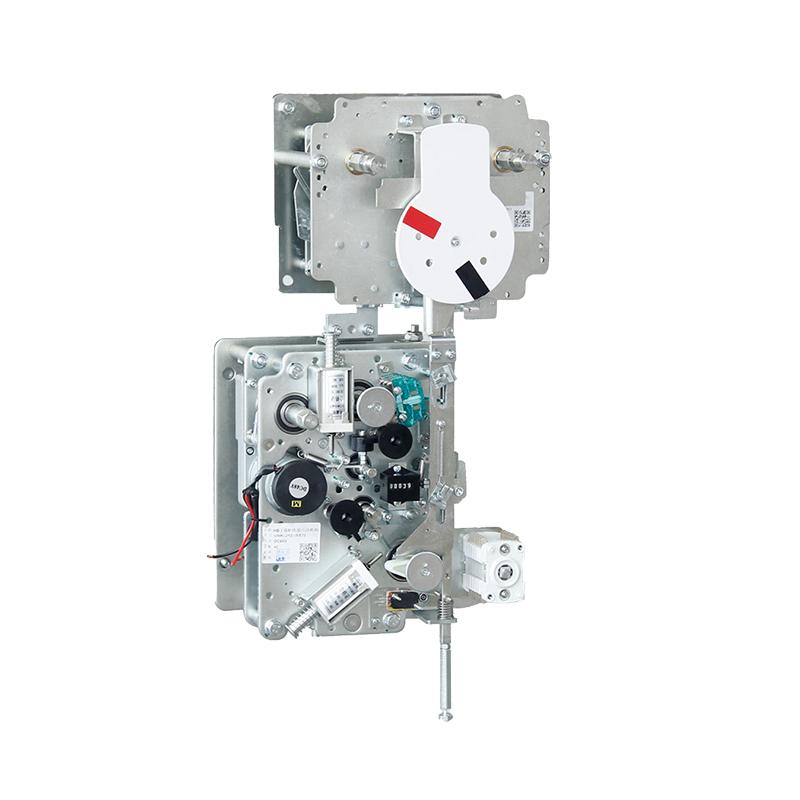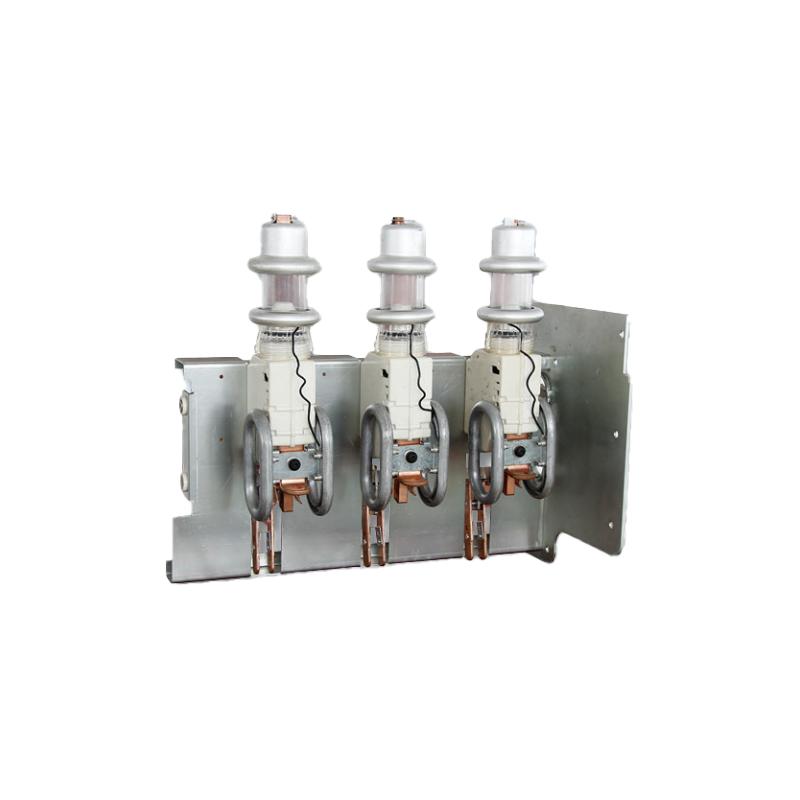
A residual current circuit breaker (RCCB) is an electrical safety device that detects and interrupts an electrical circuit when there is a leakage current to the ground. It protects people and equipment from electric shocks, fires, and other hazards caused by faulty wiring, insulation failure, or accidental contact with live parts.
An RCCB works on the principle of Kirchhoff’s current law, which states that the sum of currents entering a node must equal the sum of currents leaving that node. In a normal circuit, the current flowing through the live (hot) wire and the neutral wire is equal and opposite. However, if there is a fault in the circuit, such as damaged insulation or a human touching a live wire, some of the current will divert to the ground through an alternative path. This creates an imbalance between the live and neutral currents, which is detected by the RCCB and triggers it to trip (switch off) the circuit within milliseconds.
An RCCB consists of a toroidal transformer with three coils: one for the live wire, one for the neutral wire, and one for the sensing coil. The live and neutral coils produce equal and opposite magnetic fluxes when the currents are balanced. When there is an imbalance, a residual magnetic flux is generated, which induces a voltage in the sensing coil. This voltage activates a relay that opens the contacts of the RCCB and disconnects the circuit.

An RCCB also has a test button that allows users to check its functionality by creating a small leakage current in the circuit. When pressed, the test button connects the live wire on the load side to the supply neutral, bypassing the neutral coil of the RCCB. This causes an unbalance in the currents and fluxes, which should make the RCCB trip. If it does not, it means that the RCCB is faulty or incorrectly wired and needs to be replaced or repaired.
Types of Residual Current Circuit Breakers
There are different types of RCCBs based on their sensitivity to different types of leakage currents:
Type AC: This type responds to pure alternating currents (AC) only. It is suitable for general applications where there are no electronic devices or variable frequency drives that produce direct or pulsating currents.
Type A: This type responds to both AC and pulsating direct currents (DC). It is suitable for applications where there are electronic devices such as computers, TVs, or LED lights that generate rectified or chopped currents.
Type B: This type responds to AC, pulsating DC, and smooth DC currents. It is suitable for applications where there are devices such as solar inverters, battery chargers, or electric vehicles that generate smooth DC currents.
Type F: This type responds to AC, pulsating DC, smooth DC, and high-frequency AC currents up to 1 kHz. It is suitable for applications where there are devices such as frequency converters, induction cookers, or dimmers that generate high-frequency currents.
The sensitivity of an RCCB is also determined by its rated residual operating current (I∆n), which is the minimum leakage current that will make it a trip. The common values of I∆n are 10 mA, 30 mA, 100 mA, 300 mA, 500 mA, and 1 A. The lower the I∆n, the higher the protection level against electric shocks. For example, a 30 mA RCCB can protect a person from cardiac arrest if they receive a shock for more than 0.2 seconds.
Another classification of RCCBs is based on their number of poles:
2-pole: This type has two slots for connecting one live wire and one neutral wire. It is used for single-phase circuits.
4-pole: This type has four slots for connecting three live wires and one neutral wire. It is used for three-phase circuits.
Advantages and Disadvantages of Residual Current Circuit Breakers
Some of the advantages of using RCCBs are:
They provide protection against electric shocks by detecting leakage currents as low as 10 mA.
They prevent fires and damage to equipment by interrupting faulty circuits quickly.
They are easy to install and operate with simple test and reset buttons.
They are compatible with different types of loads and currents (AC, DC, high-frequency).
They can act as main disconnecting switches upstream of any derived miniature circuit breakers (MCBs).
Some of the disadvantages of using RCCBs are:
They do not provide protection against overcurrents or short circuits, which can cause overheating and melting of wires. Therefore, they must be used in series with an MCB or a fuse that can handle the rated current of the circuit.
They may trip unnecessarily due to external factors such as lightning, electromagnetic interference, or capacitive coupling. This can cause inconvenience and loss of productivity.
They may fail to trip due to internal factors such as corrosion, wear, or mechanical jamming. This can compromise the safety of the circuit and the users.
They are more expensive and bulky than MCBs or fuses.
How to Choose and Install a Residual Current Circuit Breaker
To choose the right RCCB for a circuit, the following factors should be considered:
The type of load and current: The RCCB should match the type of load (AC, DC, high-frequency) and the type of current (pure, pulsating, smooth) that it will protect. For example, a type B RCCB should be used for a solar inverter that generates a smooth DC current.
The rated residual operating current (I∆n): The RCCB should have a low enough I∆n to provide adequate protection against electric shocks, but not too low to cause nuisance tripping. For example, a 30 mA RCCB is recommended for domestic and commercial applications, while a 100 mA RCCB is suitable for industrial applications.
The rated current (In): The RCCB should have a high enough In to handle the normal operating current of the circuit, but not too high to exceed the capacity of the MCB or fuse that it is connected with. For example, a 40 A RCCB should be used with a 32 A MCB for a 230 V single-phase circuit.
The number of poles: The RCCB should have the same number of poles as the supply voltage. For example, a 2-pole RCCB should be used for a 230 V single-phase circuit, while a 4-pole RCCB should be used for a 400 V three-phase circuit.
To install an RCCB, the following steps should be followed:
Switch off the main power supply and isolate the circuit that needs to be protected by the RCCB.
Connect the live wire(s) from the supply side to the input terminal(s) of the RCCB marked as L1, L2, and L3.
Connect the neutral wire from the supply side to the input terminal of the RCCB marked as N.
Connect the live wire(s) from the load side to the output terminal(s) of the RCCB marked as L1’, L2’, and L3’.
Connect the neutral wire from the load side to the output terminal of the RCCB marked as N’.
Ensure that all connections are tight and secure and that no wires are loose or exposed.
Switch on the main power supply and test the RCCB by pressing the test button. The RCCB should trip and disconnect the circuit. If it does not, check for any wiring errors or faulty components and fix them before using the circuit.
Reset the RCCB by pressing the reset button. The RCCB should close and reconnect the circuit. If it does not, check for any wiring errors or faulty components and fix them before using the circuit.
Summary
A residual current circuit breaker (RCCB) is an electrical safety device that detects and interrupts an electrical circuit when there is a leakage current to the ground. It protects people and equipment from electric shocks, fires, and other hazards caused by faulty wiring, insulation failure, or accidental contact with live parts.
An RCCB works on the principle of Kirchhoff’s current law, which states that the sum of currents entering a node must equal the sum of currents leaving that node. In a normal circuit, the current flowing through the live and neutral wires is equal and opposite. However, if there is a fault in the circuit, some of the current will divert to the ground through an alternative path. This creates an imbalance between the live and neutral currents, which is detected by the RCCB and triggers it to trip the circuit within milliseconds.
An RCCB consists of a toroidal transformer with three coils: one for the live wire, one for the neutral wire, and one for the sensing coil. The live and neutral coils produce equal and opposite magnetic fluxes when the currents are balanced. When there is an imbalance, a residual magnetic flux is generated, which induces a voltage in the sensing coil. This voltage activates a relay that opens the contacts of the RCCB and disconnects the circuit.
An RCCB also has a test button that allows users to check its functionality by creating a small leakage current in the circuit. When pressed, the test button connects the live wire on the load side to the supply neutral, bypassing the neutral coil of the RCCB. This causes an unbalance in the currents and fluxes, which should make the RCCB trip. If it does not, it means that the RCCB is faulty or incorrectly wired and needs to be replaced or repaired.
There are different types of RCCBs based on their sensitivity to different types of leakage currents: type AC, type A, type B, and type F. The sensitivity of an RCCB is also determined by its rated residual operating current (I∆n), which is the minimum leakage current that will make it trip. The common values of I∆n are 10 mA, 30 mA, 100 mA, 300 mA, 500 mA, and 1 A. The lower the I∆n, the higher the protection level against electric shocks.
Another classification of RCCBs is based on their number of poles: 2-pole and 4-pole. The number of poles should match the supply voltage of the circuit.
Some of the advantages of using RCCBs are: they provide protection against electric shocks, they prevent fires and damage to equipment, they are easy to install and operate, they are compatible with different types of loads and currents, and they can act as main disconnecting switches. Some of the disadvantages of using RCCBs are: they do not provide protection against overcurrents or short-circuits, they may trip unnecessarily due to external factors, they may fail to trip due to internal factors, and they are more expensive and bulky than MCBs or fuses.
To choose and install an RCCB, the following factors should be considered: the type of load and current, the rated residual operating current (I∆n), the rated current (In), and the number of poles. The RCCB should be connected in series with an MCB or a fuse that can handle the rated current of the circuit. The RCCB should be tested and reset regularly to ensure its functionality and safety.
Statement: Respect the original, good articles worth sharing, if there is infringement please contact delete.



























